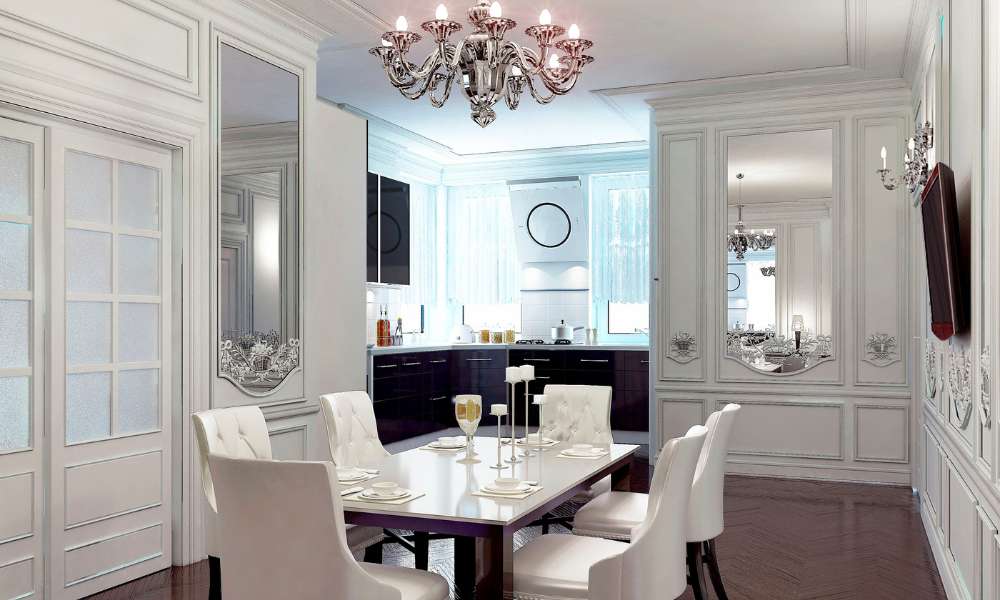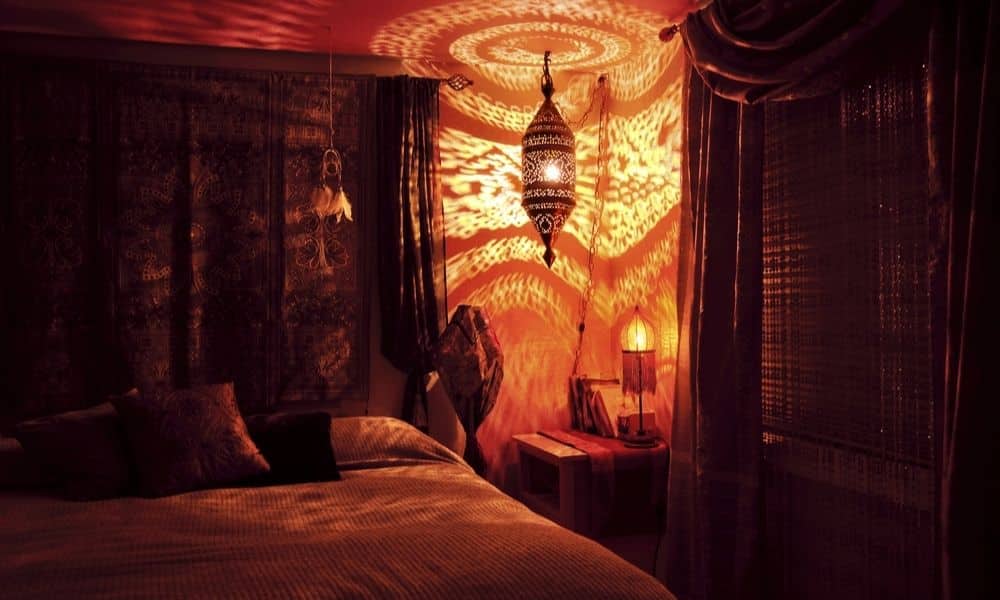Choosing the right size chandelier for your dining table is crucial for achieving a balanced and aesthetically pleasing dining room. A chandelier that’s too small can look out of place, while one that’s too large can overwhelm the space. By understanding the principles of proportional sizing, considering the shape of your dining table, and factoring in the ceiling height, you can select a chandelier that not only complements your dining room’s design but also enhances its overall ambiance. In this guide, we’ll explore the key considerations and expert tips to help you find the perfect chandelier size for your dining table.
1. Importance of Size Selection
Selecting the right size chandelier for your dining table is essential for creating a harmonious and visually appealing dining space. The chandelier serves as a focal point, drawing the eye and setting the tone for the room. If the hanging light is too large, it can dominate the space and make the dining area feel cramped. Conversely, a chandelier that is too small may look insignificant and fail to provide adequate lighting. The right-sized hanging light not only enhances the room’s aesthetic but also ensures proper illumination, making meals and gatherings more enjoyable. By carefully considering the chandelier size, you can achieve a perfect balance of style and functionality in your dining room.
2. Measuring Dining Table
Measuring your dining table for a chandelier is a crucial step in ensuring you choose the right fixture. Start by measuring the length and width of your dining table. A general rule of thumb is to select a chandelier with a diameter that is about half to two-thirds the width of the table. This proportion helps maintain visual balance and prevents the chandelier from overwhelming the table. Additionally, consider the height of the chandelier. It should hang approximately 30 to 36 inches above the table for standard ceiling heights, providing enough clearance while maintaining an intimate ambiance. Accurate measurements are key to finding a chandelier that complements your dining table and enhances your dining experience.
3. Proportional Size Guidelines
Adhering to proportional chandelier size guidelines ensures your dining room looks balanced and elegant. A commonly recommended guideline is to select a chandelier with a diameter that is about one-half to two-thirds the width of your dining table. This proportion helps the chandelier serve as a focal point without overwhelming the space. Additionally, the chandelier’s height should correspond to the room’s ceiling height and the size of the table, typically hanging 30 to 36 inches above the table surface for an average ceiling height. These guidelines help create a cohesive look, ensuring the chandelier enhances the room’s ambiance and functionality without overpowering other elements. By following these proportional guidelines, you can achieve a well-balanced and visually appealing eating area.
4. Size Based on Table Shape
Choosing the right chandelier size based on the shape of your dining table is vital for creating a cohesive look. For rectangular or oval tables, opt for a chandelier that is roughly one-third the length of the table to ensure even light distribution. A linear or multi-light chandelier often works best with these shapes, spanning the length of the table and enhancing the room’s symmetry. For round or square tables, a single, central chandelier with a diameter of about half to two-thirds the width of the table is ideal. This helps maintain balance and provides ample lighting for all diners. Matching the chandelier shape and size to your table’s shape ensures a harmonious design and a well-lit dining experience.
5. Ceiling Height and Size
Ceiling height plays a crucial role in determining the appropriate chandelier size for your dining table. For rooms with standard 8-foot ceilings, the bottom of the hanging light should hang about 30 to 36 inches above the table surface to ensure adequate head clearance and optimal lighting. In rooms with higher ceilings, you can add 3 inches for each extra foot of ceiling height, allowing the chandelier to maintain a proportional presence without appearing too high or low. Additionally, for very tall ceilings or two-story dining rooms, consider larger chandeliers or tiered designs to fill the vertical space effectively. Proper alignment of the chandelier height with the ceiling ensures a balanced look and enhances the room’s overall ambiance.
6. Ideal Diameter and Length
The ideal chandelier diameter and length are critical factors in achieving a balanced and visually pleasing dining area. To determine the perfect diameter, a general rule is to select a chandelier that is about half to two-thirds the width of your eating desk. For instance, if your table is 48 inches wide, the chandelier should have a diameter of approximately 24 to 32 inches. The length, especially for linear chandeliers over rectangular tables, should cover about one-third of the table’s length, ensuring even light distribution without overpowering the space. This proportional approach helps the hanging light complement the eating table and room decor, providing both functionality and aesthetic appeal. By carefully considering these dimensions, you can select a hanging light that enhances your dining experience and adds a touch of elegance to your home.
7. Styles for Dining Rooms
Chandelier styles for dining rooms vary widely, offering options to match any decor and personal taste. From classic crystal chandeliers that exude elegance and sophistication to modern, minimalist designs that provide a sleek and contemporary look, the style you choose can significantly impact the room’s ambiance. Rustic chandeliers made from wrought iron or wood bring a warm, cozy feel, ideal for farmhouse or country-style dining rooms. For a more eclectic or industrial vibe, consider chandeliers with exposed bulbs and mixed materials. The right hanging light style not only complements your eating room’s decor but also enhances the overall dining experience by creating the desired atmosphere. By carefully selecting a chandelier that reflects your style, you can add a distinctive touch to your eating space.
8. Common Sizing Mistakes
Common chandelier sizing mistakes can significantly impact the look and functionality of your dining room. One frequent error is choosing a hanging light that is too large for the space, which can overwhelm the eating area and make it feel cramped. Conversely, a chandelier that is too small may appear insignificant and fail to provide adequate lighting. Another mistake is not considering the ceiling height, which can result in a chandelier hanging too low and obstructing the view or too high and not illuminating the table properly. Additionally, ignoring the table’s shape and size can lead to disproportionate lighting. By avoiding these common mistakes and carefully considering hanging light size, ceiling height, and table dimensions, you can create a harmonious and well-lit dining environment.
9. Balancing Aesthetics with Functionality
Balancing aesthetics with functionality is essential when selecting a chandelier for your dining table. While the hanging light serves as a central decorative piece that enhances the room’s visual appeal, it also needs to provide adequate lighting for dining and other activities. To achieve this balance, consider the style and design of the hanging light in your eating room decor, ensuring it complements the overall theme. Simultaneously, focus on the practical aspects, such as the brightness of the light and the fixture’s size. A chandelier that is both beautiful and functional can create a welcoming and elegant atmosphere, making your eating area not only stylish but also comfortable and practical for everyday use. By carefully balancing these elements, you ensure that your hanging light serves both its aesthetic and functional purposes effectively.
10. Expert Tips for Selection
Expert tips for chandelier selection can guide you in choosing the perfect fixture for your eating room. First, always consider the size and scale of both your dining desk and room to ensure the hanging light is proportionate. Measure the table and follow the guideline of selecting a hanging light with a diameter of half to two-thirds the table’s width. Secondly, take ceiling height into account; the chandelier should hang 30 to 36 inches above the table for standard ceilings, adjusting higher for taller ceilings.
Third, match the hanging light style to your room’s decor, whether it’s modern, traditional, rustic, or industrial, to enhance the overall aesthetic. Additionally, pay attention to the chandelier’s light output to ensure it provides sufficient illumination for your dining needs. Finally, seek professional advice if needed, as interior designers can offer valuable insights and help you avoid common mistakes. By following these expert tips, you can select a hanging light that perfectly blends style and functionality, creating a stunning focal point in your eating room.
Conclusion
Selecting the right chandelier for your dining table involves a careful balance of size, style, and functionality. By measuring your table accurately, considering the shape and ceiling height, and following proportional size guidelines, you can ensure the hanging light enhances your eating space without overwhelming it. Choosing a hanging light that complements your room’s decor and provides adequate lighting is crucial for creating a harmonious and inviting atmosphere. Avoiding common sizing mistakes and following expert tips will help you make an informed decision. With these considerations in mind, you can select a hanging light that not only serves as a beautiful focal point but also elevates your dining experience, adding both elegance and practicality to your home.





